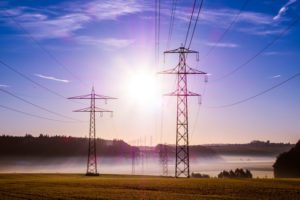For many years, our homes have worked with traditional electrical installations. Electric lighting and some appliances have improved our comfort and are now visible. However, conventional electrical facilities including electrical outlets, switches, and lights tend to disappear. New technologies have emerged in the past two decades. They are introduced gradually into homes in addition to conventional electrical installations that are limited in their functionality.
 Historical
Historical
Today, while the use of electricity in homes seems easy, this has not always been the case. Not so long ago, it was known normal to use candles for lighting, just as it was normal to operate a wheel manually to spin the drum of the washing machine.
Historically, electricity is considered a relatively new technology. It was not until the first half of the 20th century that most citizens were able to benefit from power inside their homes. Each piece then operated with a single lamp and a single switch with a socket underneath. These outlets multiplied as the electrical appliances became more numerous, especially in the kitchen. Also, new technologies such as dimmers, timers and motion sensors have become widespread.
 Nevertheless, the basic structure of the electrical installation remains identical and therefore induces numerous disadvantages. Change or flexibility do not exist. There is no interface between the traditional electrical wiring and other subsystems of the house such as heating, alarm system, gate, audio, air conditioning. There are now solutions for the integration of everything electric.
Nevertheless, the basic structure of the electrical installation remains identical and therefore induces numerous disadvantages. Change or flexibility do not exist. There is no interface between the traditional electrical wiring and other subsystems of the house such as heating, alarm system, gate, audio, air conditioning. There are now solutions for the integration of everything electric.
Integration and flexibility
New technologies promote the sophistication of electrical installations. Thanks to their high flexibility, they make it possible to connect a large number of subsystems and make them communicate with each other. This has generated many features that have improved the comfort of residents, providing greater user-friendliness, greater communicability, better security, and lower energy consumption. Thanks to the versatility of such systems, it is straightforward to make modifications. The functions of the switches and buttons can be changed using the software. The facility can be adjusted to meet the changing needs of residents at any time. To give you an idea of the multitude of choices available to you, consult the guide on integrated automation in housing, in other words: home automation.
